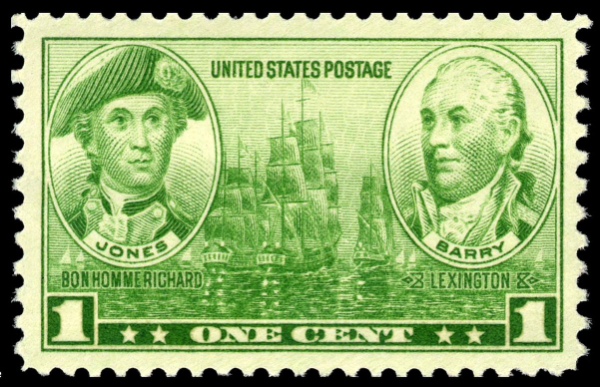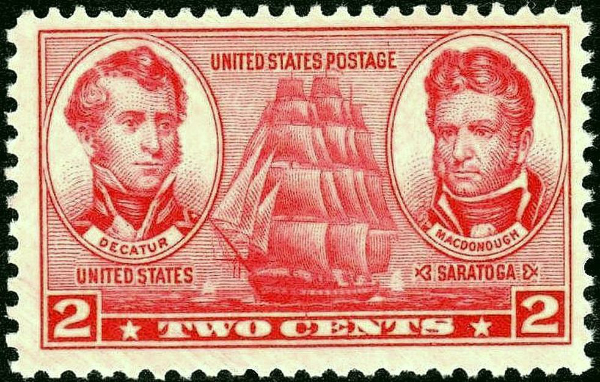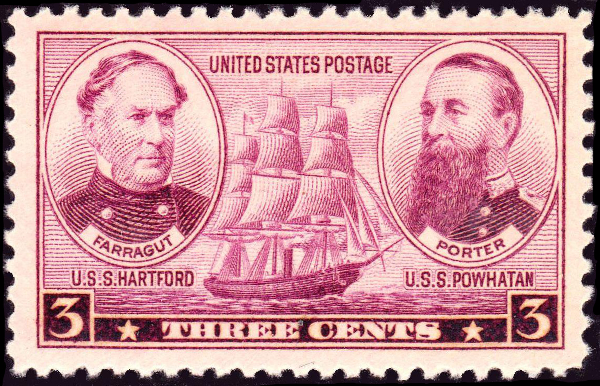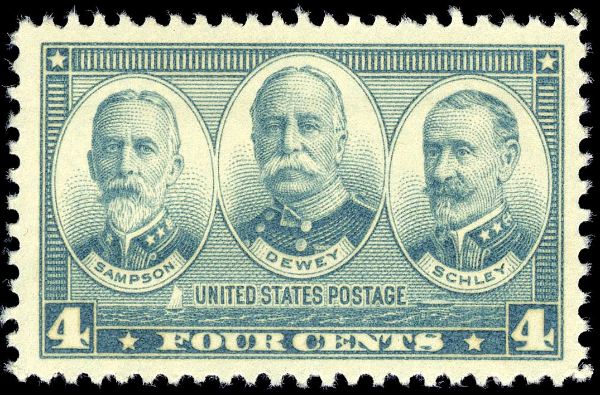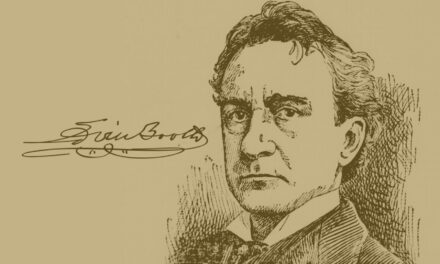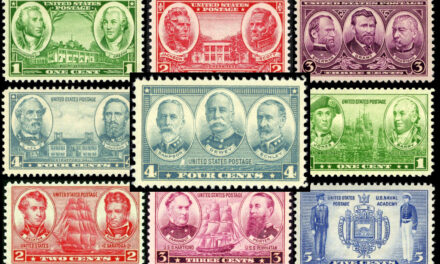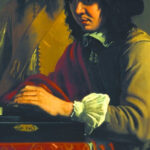
5-cent 1937 Navy Stamp: U.S. Naval Academy at Annapolis
The 5-cent 1937 Navy stamp honors the United States Naval Academy at Annapolis, Maryland, the second older U.S. service academy. The ultramarine stamp features the official seal of the Naval Academy, with its motto Ex Scientia Tridens, meaning “from knowledge, seapower.” To the left of the seal is a naval cadet dressed in the uniform of the mid-1800s; to the right is a 1930s cadet.
The Naval Academy stamp is the fifth in a series of five stamps that were issued between December 1936 and May 1937 to commemorate some of the most important naval officers in American history up to that point—many of whom were Naval Academy graduates. A parallel series of Army commemoratives, including the 5-cent Army stamp featuring the U.S. Military Academy at West Point, was issued on the same dates as the Navy stamps.
The Design and Issuance of the 5-Cent 1937 Navy Stamp
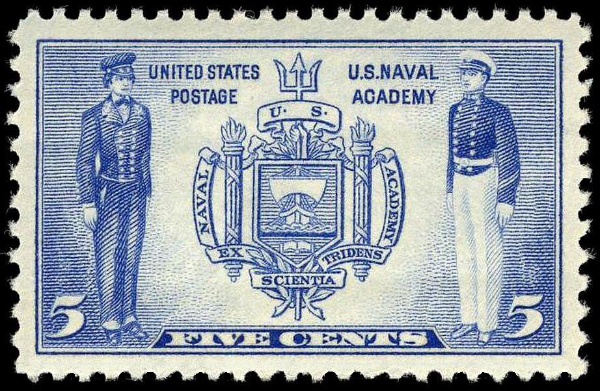
The 5-cent 1937 Navy stamp honoring the U.S. Naval Academy features the Academy’s seal and two cadets from different eras. (U.S. Post Office — U.S. Bureau of Engraving and Printing, Public domain, via Wikimedia Commons)
The Other Stamps in the 1936–1937 Navy Series
The Naval Academy Seal

The seal of the United States Naval Academy. (United States Naval Academy, Public domain, via Wikimedia Commons)
The seal of the Naval Academy was designed by Park Benjamin, Jr., an 1867 Naval Academy graduate, and adopted by the Navy Department in 1898.
The seal has four primary elements:
- a hand grasping a trident—the emblem of the Roman god Neptune, symbolic of sea power
- an ancient galley—representing seagoing vessels
- an open book—representing education and knowledge
- the Latin motto “Ex Scientia, Tridens”—from knowledge, sea power
It is fitting that the seal is the centerpiece of the stamp, because the linkage between knowledge and sea power has always been the heart of the Naval Academy’s mission and the foundation for its success.
A Brief History of the U.S. Naval Academy
The United States Naval Academy was established in Annapolis, Maryland, in 1845. In the Revolutionary War, the Continental Congress recognized the need for a navy to counteract the might of the British Royal Navy. With officers such as John Paul Jones and John Barry, the Continental Navy made important contributions to the American victory. After the war, however, the Continental Congress demobilized the Navy.
A decade later, under President George Washington, Congress authorized the construction of several new ships to combat the growing threat of piracy. The first of these ships, including the Constitution and the United States, were launched in 1797.
In 1826, President John Quincy Adams proposed that a naval academy be established to train officers, but Congress took no action. Most U.S. naval officers continued to be drawn from the ranks of merchant seamen, educated at small private naval schools, or trained at sea as apprentices.
The Naval Academy Is Established at Annapolis
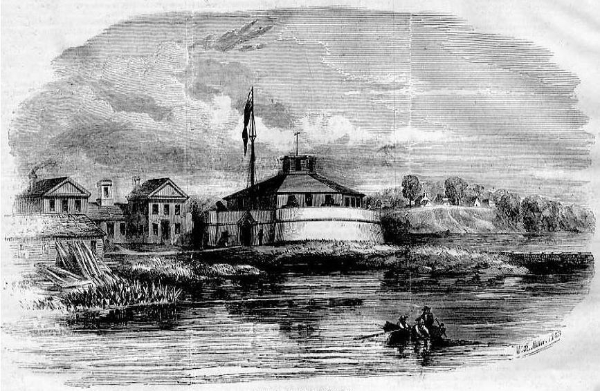
The Naval Academy at Fort Severn in Annapolis, Maryland, 1853. (W. R. Miller, Staff of the Illustrated News, Public domain, via Wikimedia Commons)
An event in 1842 prompted the creation of an official naval academy. Three trainee midshipmen aboard the training ship USS Somers, led by the son of the Secretary of War, attempted a mutiny with the intention of using the ship for piracy. The three were hanged aboard ship. In 1845, in large part due to the “Somers Affair,” Secretary of the Navy George Bancroft established a Naval School at Fort Severn in Annapolis, Maryland. Fifty midshipmen were enrolled in the first class.
In 1850, the curriculum was reorganized and the Naval School became the United States Naval Academy. Under the new curriculum, midshipmen took classes at the Academy for four years and trained aboard ship in the summers. Academic studies included English, French, mathematics, chemistry, and natural philosophy as well as navigation and gunnery. The first class graduated from the Naval Academy in 1854.
The Civil War disrupted the Naval Academy, as well as the Navy as a whole. About one-quarter of all U.S. Navy officers resigned to join the Confederate States Navy, including many graduates and midshipmen from the Naval Academy.
Although Maryland did not secede from the Union, many in the state sympathized with the South. Soon after the outbreak of the war in 1861, the U.S. government moved the Naval Academy from Annapolis to Fort Adams in Newport, Rhode Island, for the duration of the war.
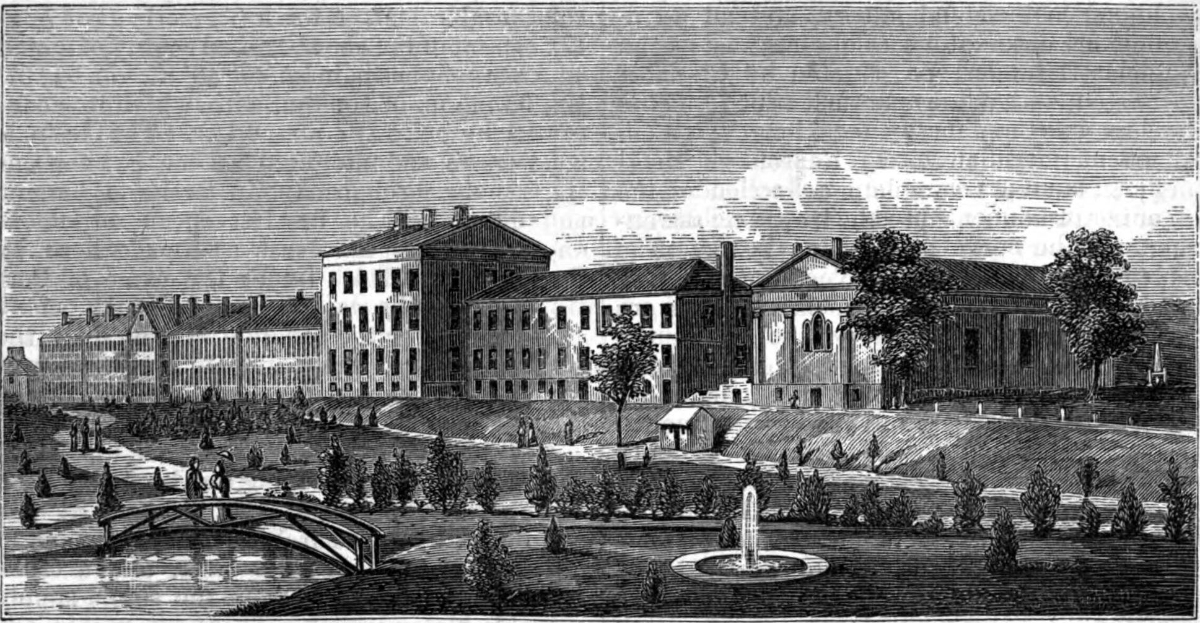
Woodcut/drawing of the United States Naval Academy campus circa 1879. (The American Cyclopædia, v. 1, 1879, p. 529, Public domain, via Wikimedia Commons)
The Spanish-American War Boosts the Naval Academy
The Spanish-American War greatly increased the Academy’s importance. The leading naval officers in the war were all graduates of the Naval Academy, including Admirals George Dewey (1858), William Sampson (1861), and Winfield Scott Schley (1860).
Assistant Secretary of the Navy Theodore Roosevelt, soon to be President, was a major booster of the war and an advocate for the Academy. In the years immediately following the war, the Naval Academy’s campus was rebuilt and significantly enlarged. New buildings of this period included Bancroft Hall, named after the Naval Academy founder, Navy Secretary George Bancroft. Over the years Bancroft Hall was expanded to become the largest dormitory in the world.
The cornerstone of the Naval Academy Chapel was laid by Admiral George Dewey in 1904, and the Chapel was dedicated in 1908. In 1913, the remains of John Paul Jones were returned from Europe and interred in a crypt below the Chapel.
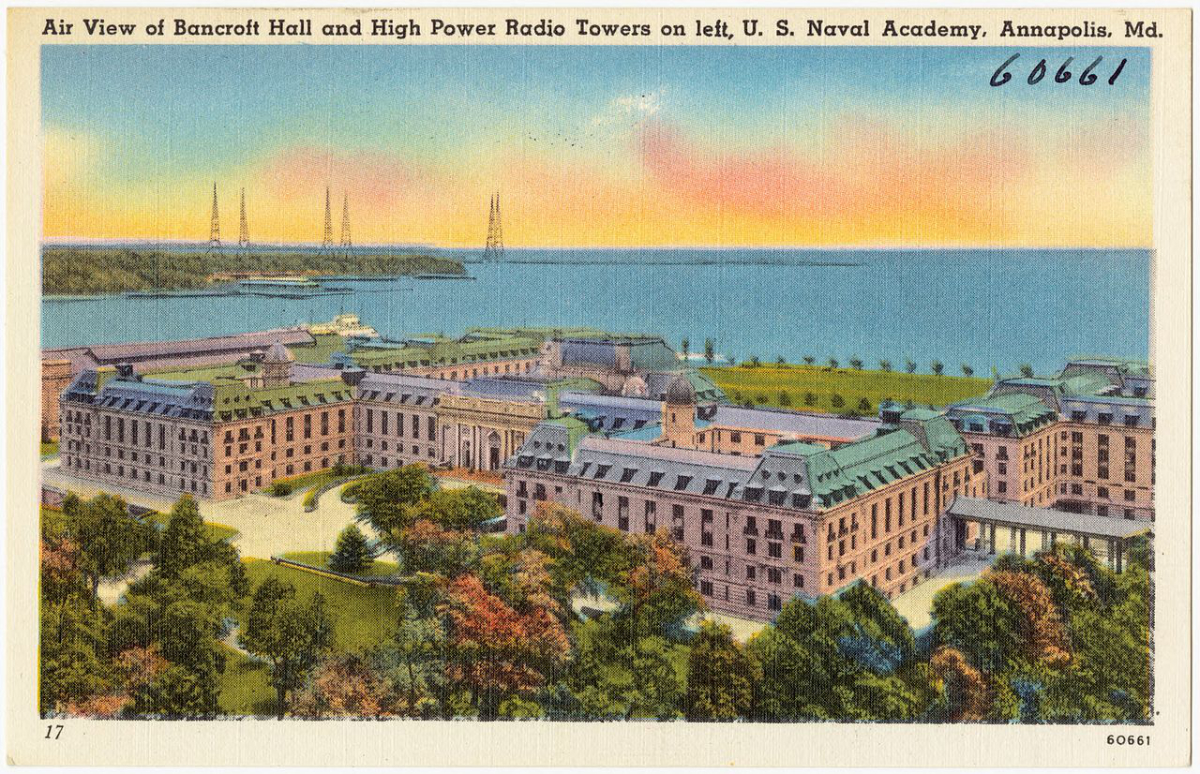
Postcard showing an air view of Bancroft Hall, circa 1930–1945. (Tichnor Brothers, Publisher, Public domain, via Wikimedia Commons)
The Naval Academy Grows Academically
In the first decades of the 20th century, before this stamp was issued, the Academy continued to grow academically.
- In 1929, six graduates received Rhodes Scholarships.
- In 1930, the curriculum was certified by the Association of American Universities.
- In 1933, President Franklin D. Roosevelt signed legislation authorizing the Naval Academy to award Bachelor of Science degrees.
This academic growth has continued to the present. The first women were admitted in 1976. The United States Naval Academy is consistently ranked among the top colleges in the United States.
Visiting the Naval Academy
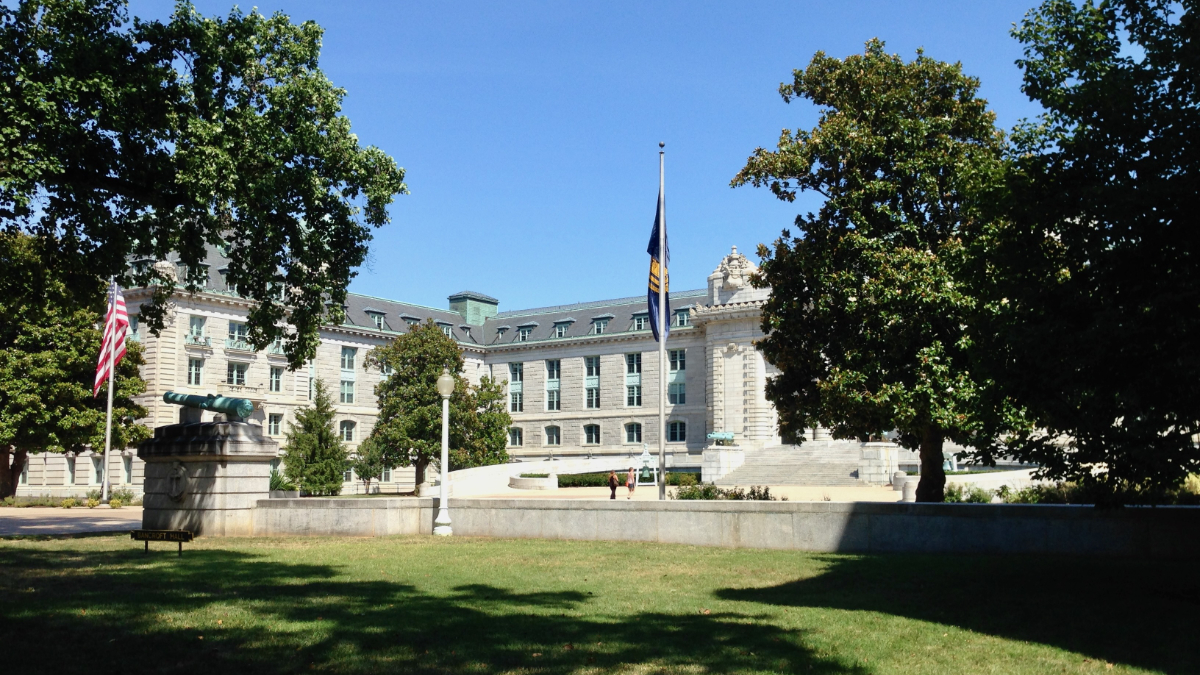
Bancroft Hall at the United States Naval Academy. (Photo by Brian Lokker)
To experience the Naval Academy for yourself and learn more about its history, visit the campus (colloquially known as “the Yard”) in Annapolis, Maryland. Annapolis is located about 25 miles (40 km) south of Baltimore and 30 miles (48 km) east of Washington DC. It is most convenient to go by car, although there are also buses from various points.
The Yard is open to visitors daily, generally from sunrise to sunset, except for several major holidays. For the general public, only pedestrian access is allowed. Visitors must have appropriate IDs and be screened at the Visitor Center.
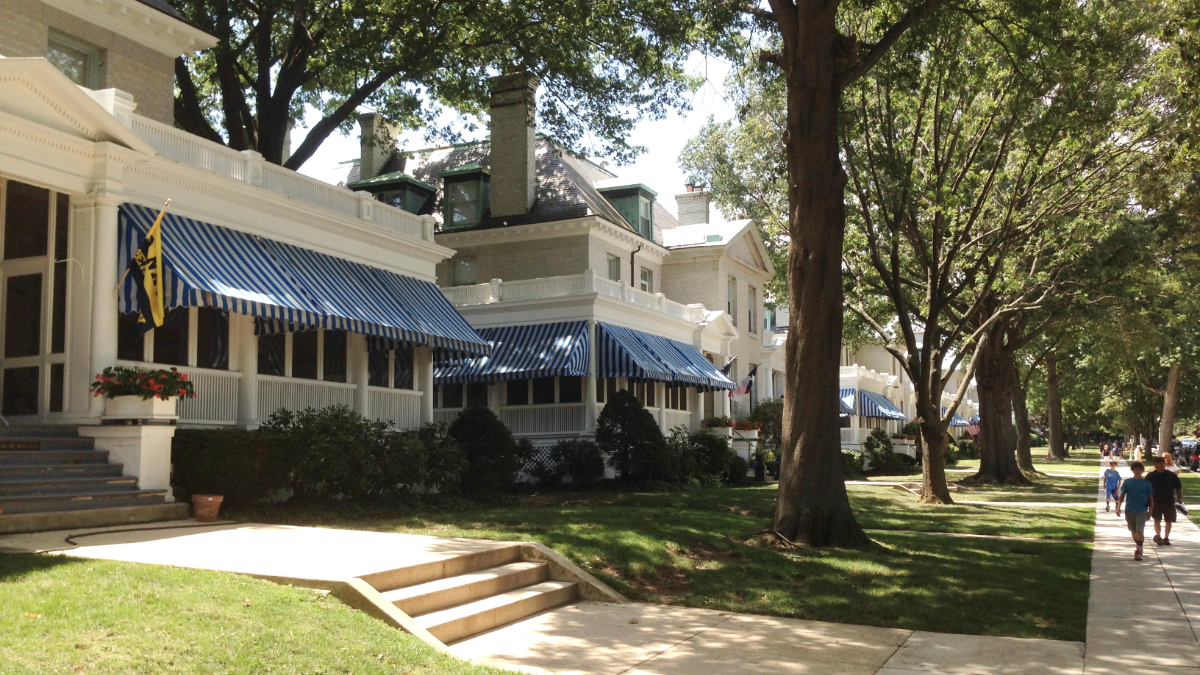
Captains Row officer housing at the Naval Academy. (Photo by Brian Lokker)
The Naval Academy offers guided tours either on foot or in electric vehicles. Whether or not you choose to take a tour, must-see spots in the Yard include Bancroft Hall, the USNA Chapel, and the Naval Academy Museum. Some concerts and other special events are also open to the public.
For up-to-date information about visiting the Naval Academy, see the Naval Academy Tourism website.
A Window on American History
The 5-cent 1937 Navy stamp featuring the United States Naval Academy at Annapolis honors an exceptional institution that has educated and trained many of America’s greatest leaders. In addition to numerous high-ranking naval officers and officials, alumni include President Jimmy Carter, many members of Congress, and more than 50 NASA astronauts.
This stamp can provide a quick introduction to the Academy and its history. Learning about commemorative postage stamps like this one is a great way to learn about history.
Copyright © Brian Lokker 2011, 2024. An earlier version of this article was published on HubPages.com in 2011 and was subsequently featured on HobbyLark.com.

